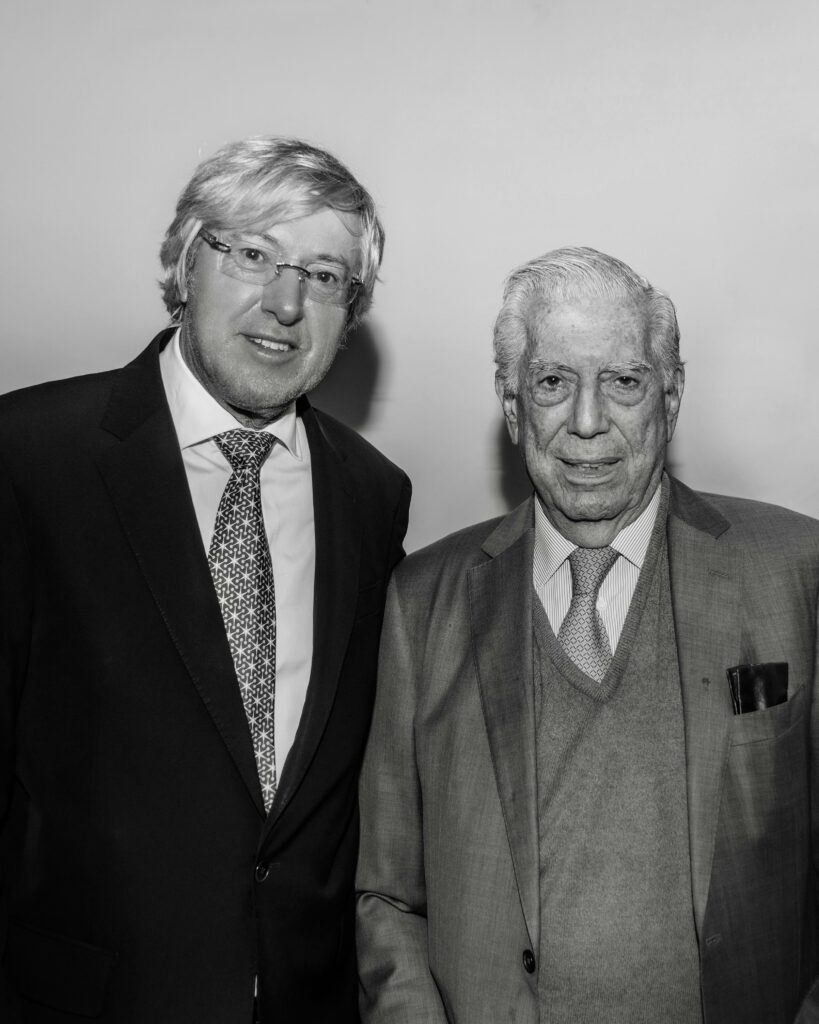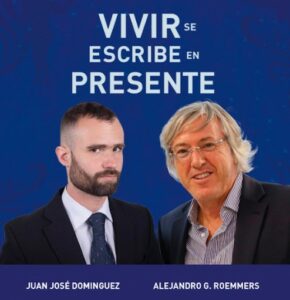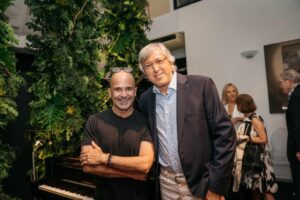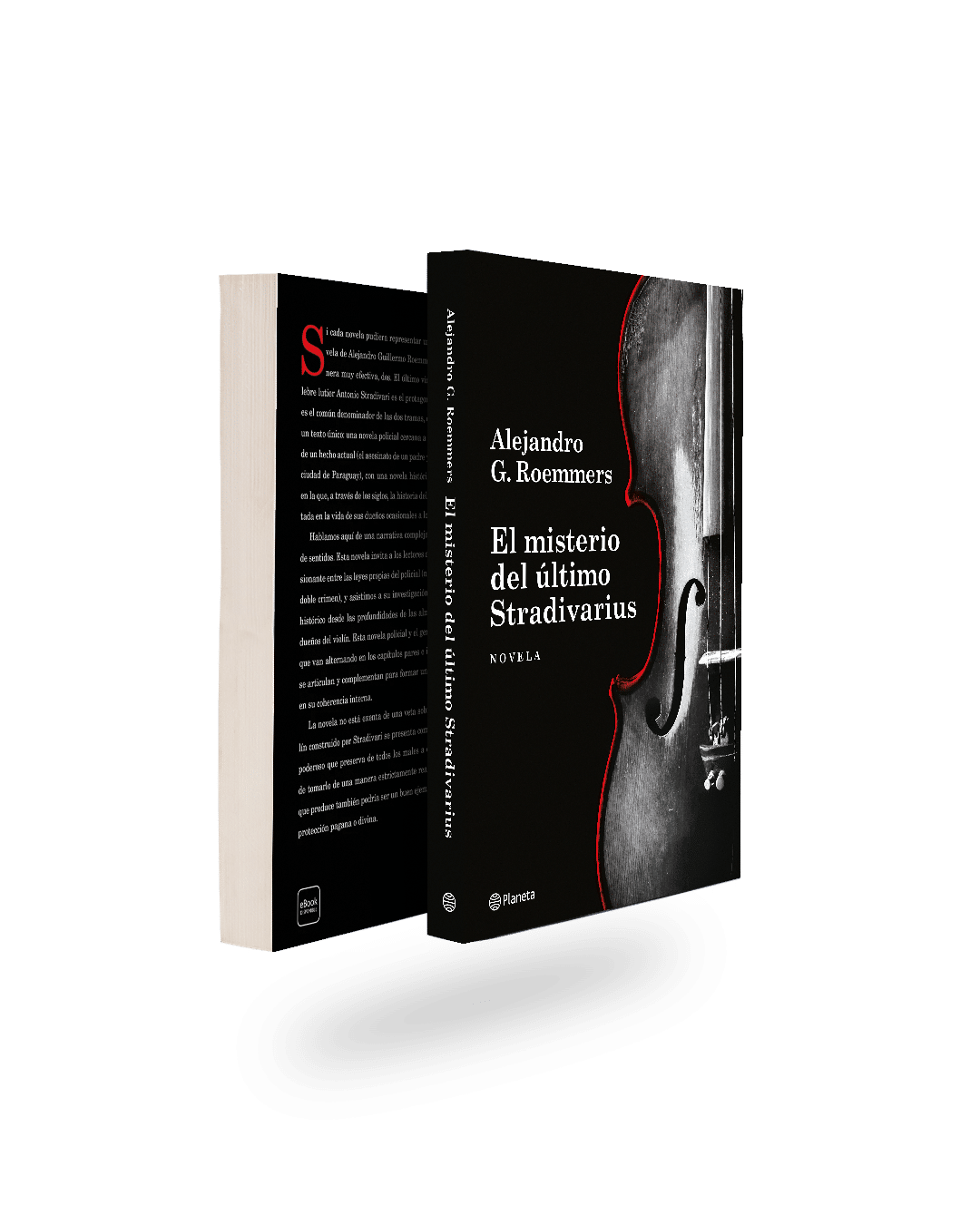
The Mystery of the Last Stradivarius – by Mario Vargas Llosa
Over the course of my life, I have met quite a few successful entrepreneurs, and some of them are my friends. Although many things set them apart, they all have in common the fact that their businesses and entrepreneurial ventures—what essentially defines their lives—often come up in conversation. Just as an architect, a lawyer, an artist, an athlete, or a politician can’t help but talk about their work with those close to them, an entrepreneur usually shares at least some aspect of their daily activity with the people they interact with.
That’s why I find Alejandro G. Roemmers’s case so remarkable. Since the moment I met him and during the times we’ve crossed paths, whether in Madrid or Buenos Aires, I don’t recall ever hearing him talk about his businesses or investments, or even about his role during the years he was involved in the day-to-day operations of Laboratorios Roemmers—the family company his grandfather founded in Argentina and which today has a strong presence in many countries. He stepped away from its management a couple of decades ago, although he remains connected to it.
What we have spoken about, whenever we’ve met, has mainly been literature—for instance, about the manuscripts of Jorge Luis Borges, which he took the time to track down in various parts of the world and gather into a remarkable collection, made available to the public through a magnificent exhibition organized in his home country.
I have no doubt that when it comes to business, he is very grounded and reveals a competitive and ambitious spirit. If that weren’t the case, he would not have contributed so decisively to the growth and success of the family company. But what I do know is that when he speaks with friends or acquaintances, his feet seem to be elsewhere. There is something of a daydreamer’s calling in him, a touch of naivety, and what he conveys is a sense of vulnerability and spirituality—as if, to defend himself from the brutal and barbaric world we live in, he needed to mentally take flight toward another one made of dreams and purity.
One might say he gives the impression of being a dreamer with his head in the clouds, someone who feels more at home in unreality than in reality—if it weren’t for the fact that achieving what he has in the business world would be impossible without being firmly grounded in real life, overcoming obstacles, competitors, and setbacks, anticipating what others have yet to see, intuiting market opportunities ahead of time, making split-second decisions, and inspiring and rallying those around him to pursue shared goals.
But it’s easy to imagine him—as a teenager, at that early age when he began writing poetry—crafting images from words and playing with them like modeling clay, shaping them until they bore his mark, his personality—or rather, the hidden face of his personality. That literary sensitivity, it seems, emerged very early and likely served as his charm against the things that disturbed, troubled, displeased, or frightened him in the strange world he had to live in.
Years have passed, and he has now published many books of poetry that have earned him recognition in various parts of the world. His creative vocation has led him to explore different genres. He has even written and produced musicals, such as the one he dedicated to the life of Francis of Assisi—the saint for whom he feels a deep fascination. Within the context of emerging capitalism in medieval Italy, driven by the privileges and excesses of certain Church princes, Francis rebelled against his own family and, from a life of chosen poverty and feverish activity that led him to rebuild temples, parishes, and other ruined sanctuaries, spearheaded a movement to return to lost values within the ecclesiastical hierarchy—a mission he pursued through the religious orders he founded.
His calling has also led him to publish prose, as evidenced by his short novel The Return of the Young Prince, inspired by Antoine de Saint-Exupéry’s famous work. In it, a motorist encounters a teenager on a Patagonian road—who turns out to be the Little Prince. The literary character has returned to Earth and, throughout a conversation about existential matters with his companion, conveys a humanistic vision of the world, much like in the original book that inspired it. According to the author himself, this book was born from unhappiness and sadness during a depressive stage of his life, and it helped him rediscover his will to live.
But his literature would be incomplete and unrealistic if it were only an attempt to fix the world through kindness and the pursuit of happiness. The novel is a genre steeped in suffering, evil, and human conflict—in other words, in unhappiness. By exploring the sordidness of human existence and life in society, it conveys profound truths that only literary creation can offer.
In other works, such as Die as Necessary, which opens with the discovery of a corpse, Roemmers explores those darker layers of life—crime, corruption, the drama hidden in human and family relationships—through characters and plots treated with realism. In literature, realism refers to the simulation of a reality that, while it cannot be entirely transferred to the world of words, feels recognizable because it connects with verifiable aspects of the world we live in.
A writer can practice both poetry and the novel with equal talent, provided they understand—or intuitively grasp—that these are radically different genres. Poetry aspires to perfection, while the novel is necessarily imperfect. The former evolved in courtly circles; the latter, in more plebeian ones. Even when poetry dealt with themes considered immoral by public standards, such as illicit love, it would elevate them—as seen with troubadours or Provençal poets, who transformed adultery into an experience that straddled elevated erotic desire and spirituality, through recited or sung verses.
The novel, on the other hand, is a genre that was born in the Modern Age, though it draws from traditions rooted in Antiquity and later in romances and chivalric tales. It reached its peak in the 19th century, aspiring to rival life itself in ambition, complexity, and its totalizing nature—always far from the synthetic perfection that makes poetry accessible only to certain literary craftsmen. In poetry, everything serves the language; in the novel, even if the language is rich and captivating, it serves the story being told. As Rulfo said, the novel is a bag that can hold everything: short stories, theater, action, philosophical and non-philosophical essays…
That is why it is so difficult for a writer to split themselves between poet and novelist—something I have never done. It is very different to combine poetry with the essay, as Octavio Paz did; or, like Borges, alternate it with the short story, which, when well crafted, is another form of near-geometric perfection. The novel is excess, abundance, rivers flowing into a vast sea, while poetry, in its most exalted form, avoids multiplication, the dizzying crossings of lives and the sometimes numerous plotlines that make up a narrated story.
The realist novel does not reproduce reality—because, unlike life, it is made of words—but it does pretend to, presenting elements that readers associate with real experience: events, characters, situations that could very well occur in the world they know. It draws from many sources. The historical novel, for instance, uses History as raw material, as a starting point from which to imagine and narrate one or several stories that never happened, but could have. Balzac even said in The Human Comedy that literature tells the stories of lives that truly existed but that historians never recorded—a way of saying the same thing from the opposite angle.
But no novel, no matter how closely it aligns with History, can ever fully replicate it, because to be a novel—to be a work of fiction—it requires an added element: that act of creation which transforms historical material into something else, something more. In that transformation, the novelist’s demons intervene—the irrational, profound side of their personality.
The Mystery of the Last Stradivarius, which I read in its first version, is not, nor does it pretend to be, a historical novel. Yet it draws upon historical passages and figures—from the famous Cremonese luthier Antonio Stradivari, who revolutionized music from his workshop in Casa Nuziale in late 17th and early 18th century Lombardy, to German colonies in South America and Nazi fugitives or sympathizers, passing through the Napoleonic invasions, the rise of nationalism that led to World War I, the totalitarian regimes that followed, and the Holocaust of the 1940s.
Against these many historical backdrops—which include defining moments of modern history and both real and fictional characters like Casanova, Verdi, and later the infamous Nazi leaders—two narratives unfold. As the story nears its conclusion, they begin to merge: one is the tale of the mysterious violin, the last made by Stradivari, whose journey through centuries and continents we follow with fascination; the other is the investigation, set in contemporary times, carried out by a Paraguayan commissioner, Alejandro Tobosa, and his assistant as they search for the person or persons behind a double murder unlike any case he has previously faced.
That investigation gradually reveals, both to him and to us, an unsuspected world that links that remote South American corner with key episodes of modern history.
The pair of investigators—or more precisely, the investigator and his assistant—is a classic motif in detective literature. The Mystery of the Last Stradivarius, ultimately a detective novel though it is also much more, explores this relationship in depth, with a healthy dose of intrigue, humor, tension, and surprise. As the investigation into the brutal murder of the antique dealer Johann von Bulow and his daughter Diana progresses, and clues are pursued, the narrative delves into the dark basement of human behavior, where appetites, complexes, resentment, or greed influence relationships.
These ignoble passions are counterbalanced by the nobler side of human nature, which also emerges in these pages—generosity, idealism, and a thirst for justice.
Everything that happens to Commissioner Tobosa is excessive, and at times he seems so vulnerable that he appears unfit for the grim task at hand. Yet as the story unfolds, he gradually wins over the reader’s affection to the point that, once the novel ends, he lingers with us, unsettling and accompanying us.
The great detectives of literature—Raymond Chandler’s Philip Marlowe, Simenon’s Jules Maigret, or, in our language, Vázquez Montalbán’s Pepe Carvalho—are all very different from one another and have few things in common beyond their roles. Yet they share a key trait: they seem to transcend the page and come to life, becoming flesh and blood through the deep connection readers develop with their thoughts, investigations, and adventures.
In Tobosa’s case, it’s the pathos of his circumstances that quickly draws in the reader and turns us into collaborators in his quixotic mission, gently encouraged by an omniscient narrator who zooms in on this character more than on any other.
As an old fan of classical music and a regular attendee of festivals—especially the Salzburg Festival, which I’ve attended every summer for the past three decades—I thoroughly enjoyed seeing the violin, one of the most beautiful musical instruments, become the protagonist of a work of fiction. I’m certain that readers who share this love will appreciate the journey of the last Stradivarius. And those who don’t yet share it may find, through this novel, a reason to draw closer to it.
Mario Vargas Llosa
Madrid, autumn 2024








